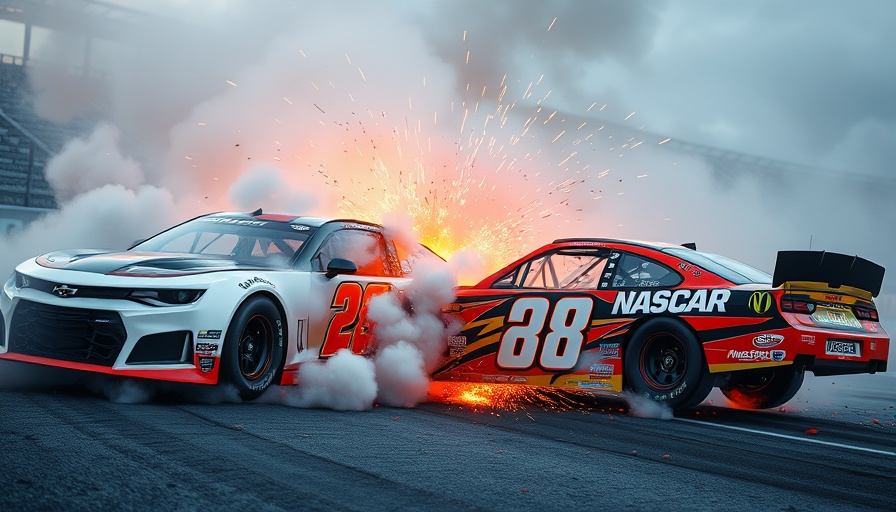
Understanding the Chaos: Byron’s Frustration Post-Crash
In a recent NASCAR Cup Series race at Atlanta, driver William Byron faced a crushing setback during a chaotic 23-car pileup. The aftermath of the crash left him visibly frustrated as he expressed his concerns over driving standards, likening the chaos to that of a Truck Series race. His candid comments have underscored growing concerns within the world of professional racing, raising questions about safety and accountability on the track.
The Ripple Effect of Aggressive Driving Styles
Byron was not alone in his disappointment. Following the crash on lap 69, a significant portion of the field was impacted, leading to a red flag that forced numerous drivers—including noted names like Denny Hamlin and Joey Logano—into early retirement from the race. Byron's situation raises a critical discussion point: how aggressive driving tactics are shaping the outcomes of races and the potential dangers they pose to drivers. With more than half the field affected, it's evident that a culture shift is needed to promote safer driving.
Context: NASCAR's Evolving Landscape
This incident is not an isolated case but part of an ongoing trend in NASCAR where aggressive maneuvers often overshadow strategic racing. As fans, we’ve witnessed a shift from purely technical prowess to a more chaotic form of competition. This raises eyebrows about how the sport’s evolution may not only impact participant safety but also the overall experience for spectators who crave skilled racing over reckless abandon.
Future Predictions: Will Safety Measures Change?
As NASCAR continues to adapt and evolve, we must consider how institutions and regulations will respond to events like this. Byron's comments could serve as a catalyst for change, leading to more stringent rules on driving conduct, particularly during critical race starts. NASCAR might have to undertake more comprehensive driver education and training programs focused on safety without sacrificing competitive spirit.
The Emotional Impact of Racing Accidents
Racing, undoubtedly thrilling, also carries emotional heft, especially in moments of chaos. For drivers like Byron, there’s a tangible sense of loss—not just of a race but of momentum, standing, and, sometimes, credibility in the fast-paced world of NASCAR. This kind of anxiety can ripple through a team’s morale, affecting future races and their overall approach to driving.
How Fans Can Engage: Rallying for Change
As spectators and fans of the sport, it’s our role to advocate for safer practices within racing. Supporting initiatives aimed at promoting safer driving standards can make a significant difference. Joining fan forums, engaging with teams and NASCAR officials on social media about the necessity of safety measures, and showing solidarity with drivers can amplify their voices.
Conclusion: A Call to Action for NASCAR Community
William Byron’s experience at Atlanta is a stark reminder of the risks involved in NASCAR racing. While aggression is inherently part of the sport, it’s imperative to balance it with a commitment to safety. As fans and participants, we can contribute to a dialogue that leads to improved standards, ensuring that future races prioritize the well-being of drivers, teams, and the fundamental essence of the sport itself. Let’s rally together—not just in support of our favorite drivers, but in advocating for a safer future in NASCAR.
 Add Row
Add Row  Add
Add 




Write A Comment